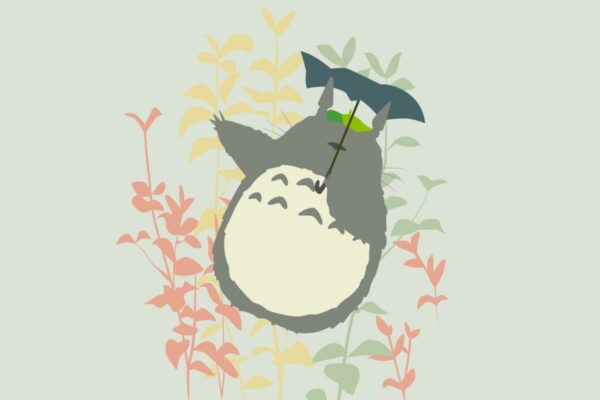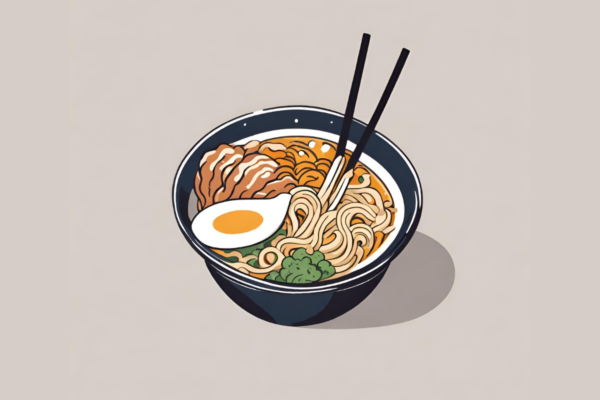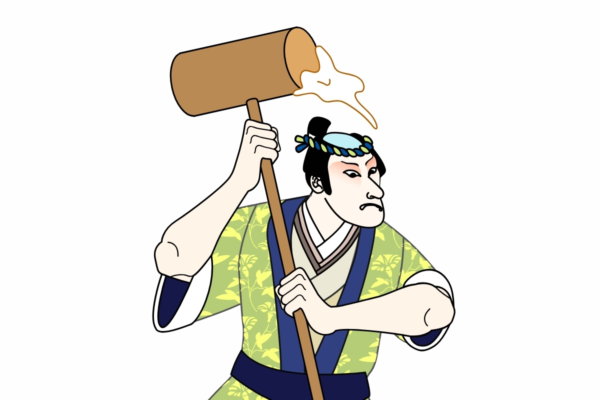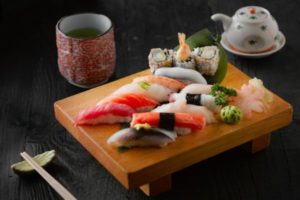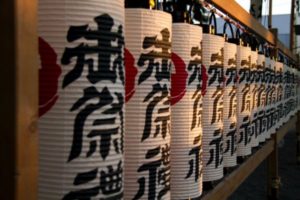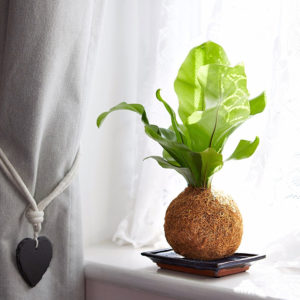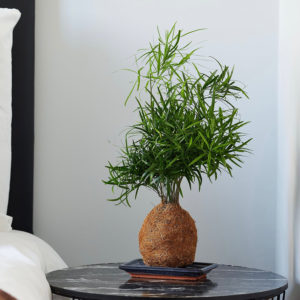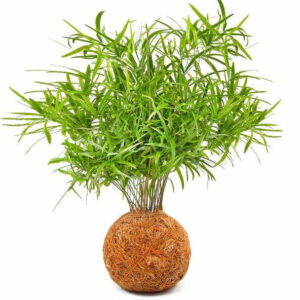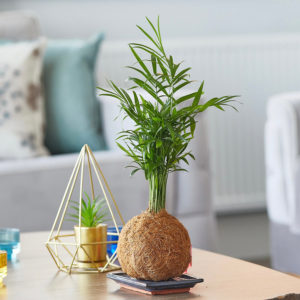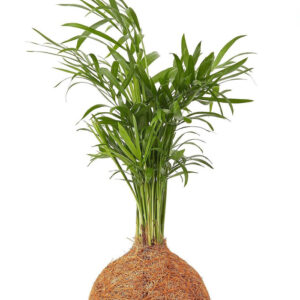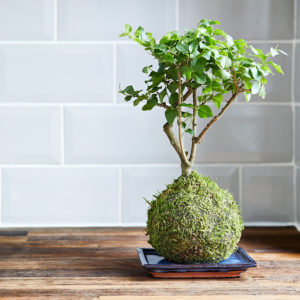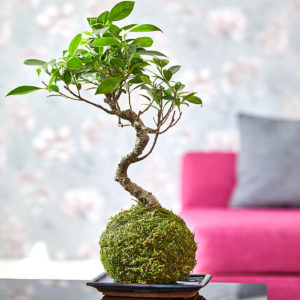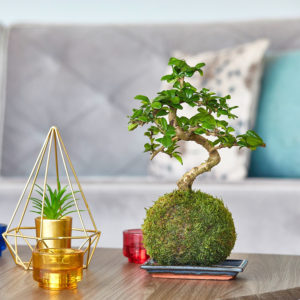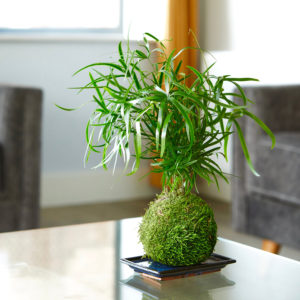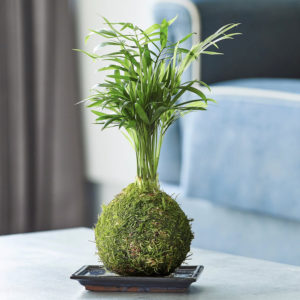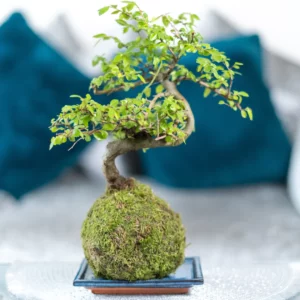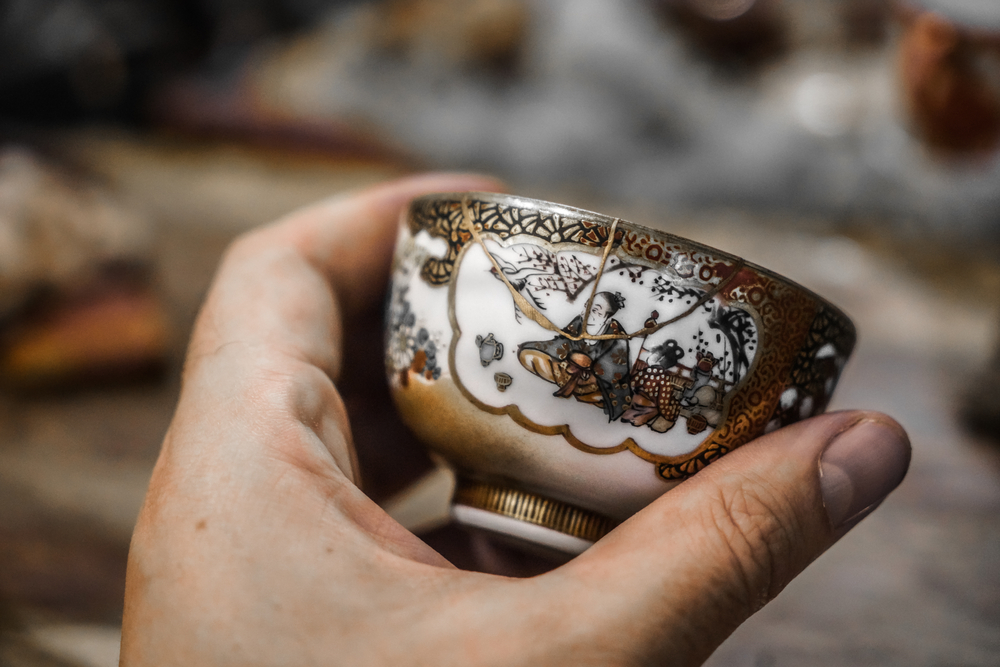Get 20% off your first Kokedama plant at Handspun Botanics, using the code JAPAN20.
It was on a cold, dreary October morning when a sharp knock on the door brought me rushing down the steps and fumbling with the lock. The door opened to reveal the back of the postman with a neat little package by my foot – a small box stood upright, with a “Fragile” sticker pasted upon it. I smiled as the minimalistic “H | S” logo indicated to me what it was – my kokedama from Hand Spun Botanics had arrived! I was so excited.
What is a kokedama, you ask? From the Japanese words “koke”, meaning moss, and “tama”, meaning ball, a kokedama literally means moss ball. It is usually an ornamental plant with its roots wrapped in a ball of soil, covered by moss, and sometimes bound together by twine, suspended in the air as a hanging decoration. Essentially, it is the epitome of wabi-sabi, the Japanese idea of seeing beauty in transience, simplicity, and imperfection. It is basically like having a Japanese Zen garden in your hands, in the form of a ball.
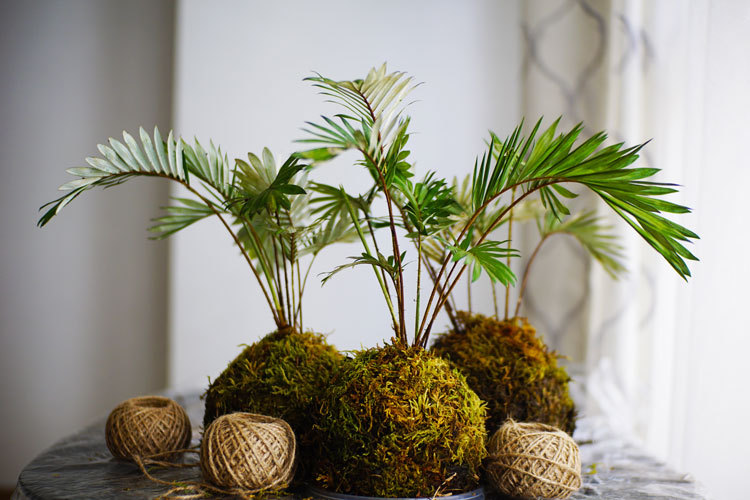
Where did the Kokedama originate?
You may be familiar with bonsai, the Japanese art of growing ornamental trees in beautifully displayed, often ceramic, pots, where the plants appear as miniature versions of a fully-grown tree. Kokedamas are said to have evolved from techniques used in Nearai (“ne”, meaning root; “arai”, meaning wash), a style of bonsai in which the pot is removed and the roots of the plant are washed and displayed. This mitigates the need for any expensive pots. Beautiful kokedama can often be spotted in Japanese gardens; this year, the National Trust-owned A la Ronde is displaying a beautiful Japanese-inspired kokedama garden.
There are many stories of how the kokedama actually came about, but Isao Umiji, a 77-year-old from Kochi, Japan, is widely claimed to be the person who brought kokedama into the world. In a brief interview he had in 2019, he mentions that he originally also thought of calling the kokedama “kokemaru” (where “maru” also means ball in Japanese). Currently, he still does many workshops teaching people how to make kokedama, and has the nickname “koke-jii” (Uncle Koke)!
For those of us who are starting to get sick of being in the same old space day in, day out, getting a kokedama may be the perfect way to spruce up your indoor space. As well as a plant, they also are a form of art in their own right, bringing the feeling of having a Japanese garden indoors. What’s more, there is so much variety in the types of plants that can be used in kokedamas, and the ways in which they are displayed, for example, by itself on a tray, hanging from a string or thread, sitting at a tall place if you’ve got a trailing plant, or even upside down! (I have to admit, I haven’t been brave enough to try that yet…)
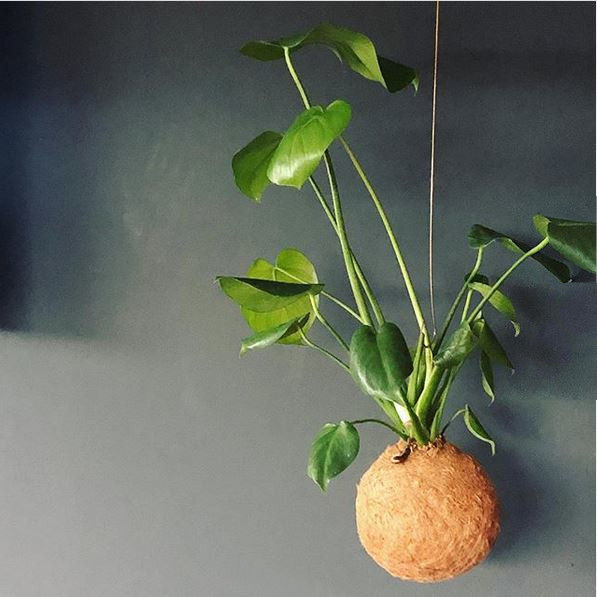
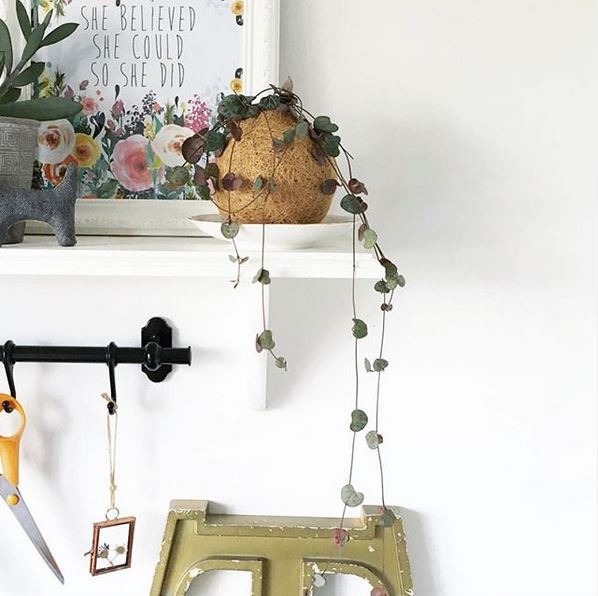
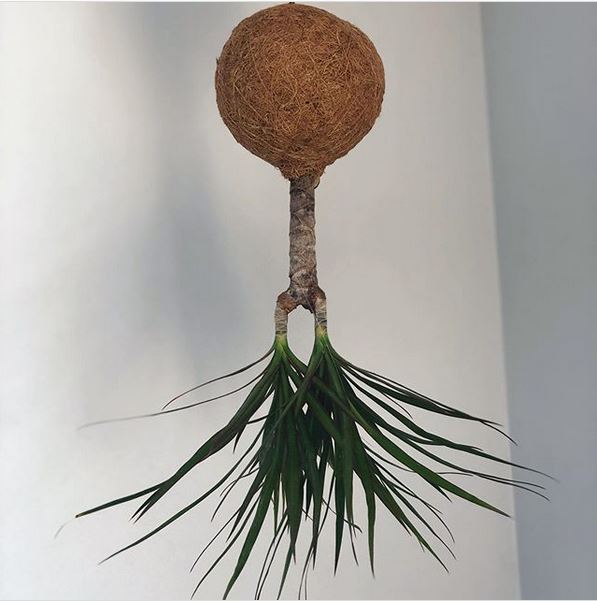
My first kokedama: The Devil’s Ivy (Pothos)
For my first kokedama (first, because I’m already trying to convince myself that I need another one), I got a Devil’s Ivy from Hand Spun Botanics. I was nervous – I remember trying to grow seedlings in eggshells when I was a kid and failing drastically – so I chose the Devil’s Ivy, often said to be an easy plant for first-time houseplant owners. It’s also one of the best indoor air-purifying plants and does not require direct sunlight. Perfect for the upcoming winter months, I thought. Of course, it’s having a trailing tail, meaning that it would be very aesthetically pleasing, was also a factor that may have swayed my decision just a little…
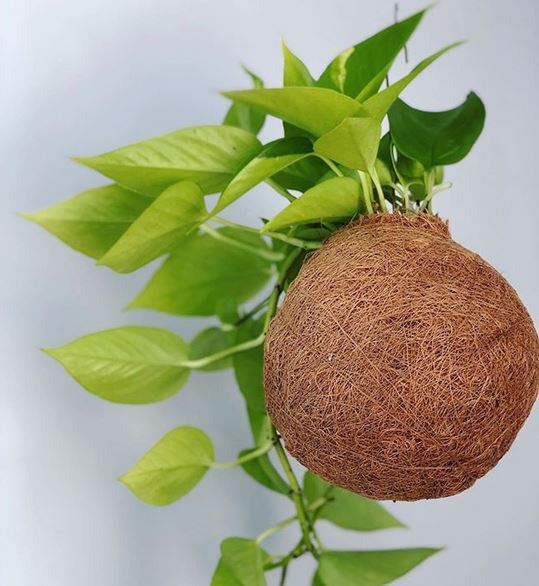
All of the kokedama from Hand Spun Botanics are handmade by the owner, Nikki, and freshly made to order. It’s perfect for anyone who wants to get into kokedama, but haven’t got the time (or courage) to try making one themselves! At Nikki’s shop, the plant type and soil mix are all carefully considered, and the materials are chosen so that the chances of growing mould or the moss turning black are minimised. Two types of kokedama are offered there: a traditional, “naked” kokedama, where the moss is exposed to the elements and turns green and alive, or one that is bound in natural coconut fibre, which provides more resistance to moisture.
My kokedama arrived in a small box filled with tissue and packaging that filled up any empty spaces, designed to minimise any impact from a bumpy ride. As I unraveled the packaging and fully took in the sight of my kokedama, I let out a breath I didn’t realise I had been holding – it was the coolest thing I had ever seen! Seeing it in pictures, and having an actual, living ball in front of you were just so different. The box also came with a thank you note and a kokedama care guide, in which a hanging kit (consisting of nylon and a hook) was enclosed.
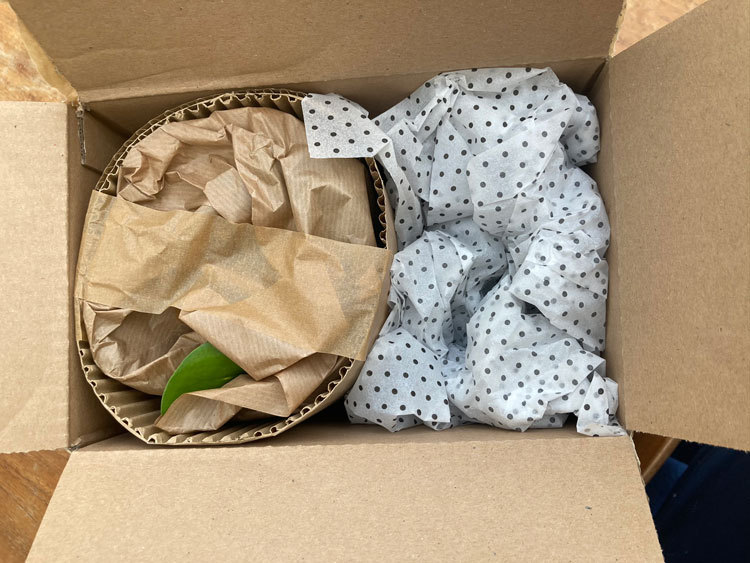
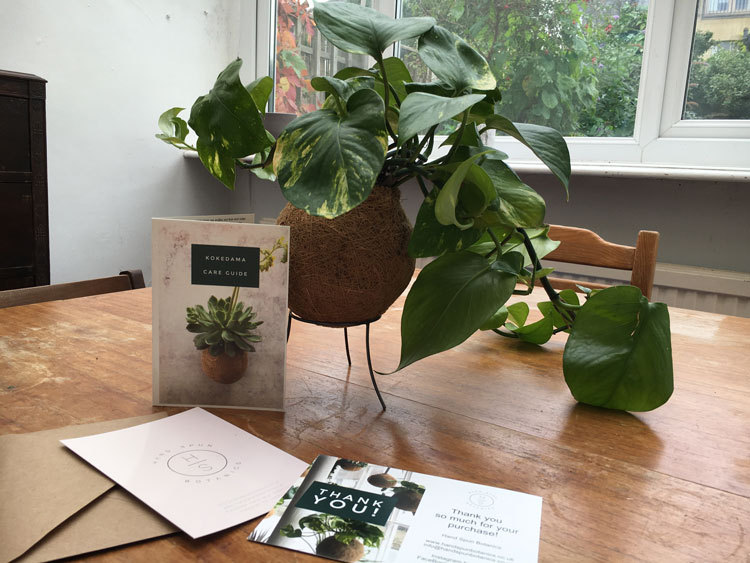
Taking care of a kokedama
This was the part I was most nervous about, but I had no need to be. Nikki’s note told me to water my kokedama on arrival, but I still had so many questions, even though I had perused the website and care guide many times. Upon picking up my kokedama, however, I knew at once that it needed some water – it felt super light! Filling a container I had with tepid water, I gently put the little ball in. Exactly as the care guide said, it floated at first, but gradually became heavier and started sinking as the kokedama started to absorb water. Eventually, I thought it probably had had enough! I took it out, gave it a little squeeze to get rid of the excess water, and moved it to its new home. I’m lucky to have a conservatory where I live and thought it was probably the best place where the kokedama can thrive in the correct conditions.
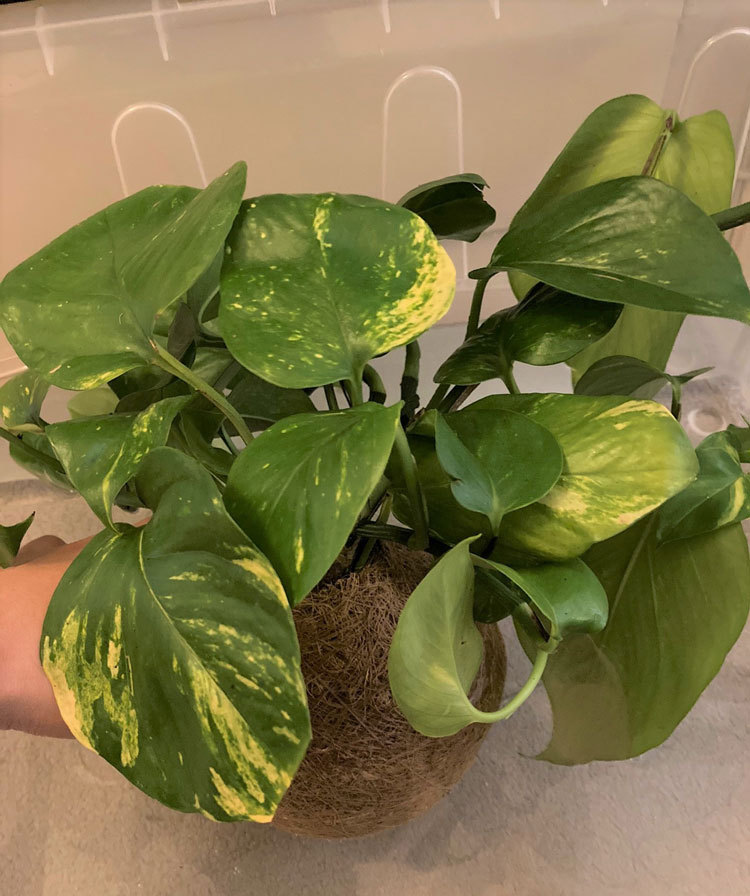
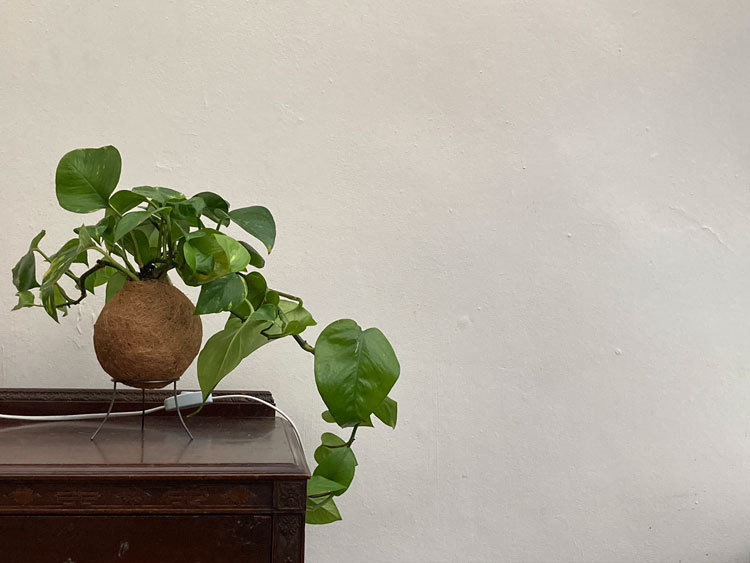
I thought taking care of a kokedama would be pretty high maintenance, but it was actually quite straightforward! Over the next couple of weeks, I would go check on my kokedama while making my morning coffee, picking it up and weighing it in my hands to see how light it was. It turns out, it’s pretty easy to tell when your kokedama needs water, especially over time as you get to know how much it should weigh. Even though the watering process can be more tedious than other plants, it’s not too bad as you will only have to do it roughly once a week, depending on your plant.
Traditionally, kokedama should last for a very long time (although repotting/replanting it may be necessary after a few years), so I’m definitely looking forward to spending many more years with my kokedama. With that said, I don’t see why I couldn’t get another one – mine has been an instant upgrade to our barren conservatory, and there is so much variety in the type of plant that you can choose to have in your kokedama. For instance, the asparagus fern tends to be fairly popular due to its unique leaves; the string of hearts trails even more so than the Devil’s Ivy; there are smaller succulents such as the jade plant; or you could even grow an olive tree!










